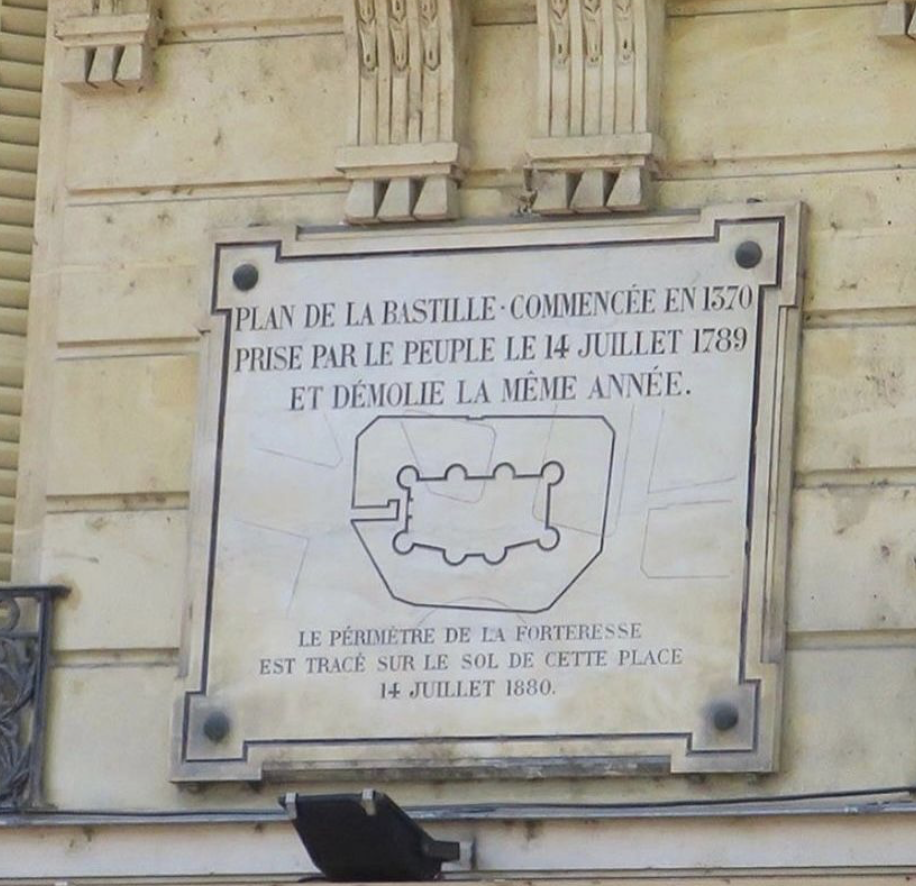This Friday is the French national holiday known as La Fête Nationale du 14 juillet. In America, most people know it as Bastille Day, the day that they swarmed the Bastille prison to release the prisoners and tear it apart, or that is what most people think the holiday stands for.
Let’s back up a bit, or 400 years first. Much like the original Louvre fortress, the Bastille was created to protect the city. Charles V added an arsenal and bastide to his wall that encircled Paris. The first stone was laid on April 22, 1370, complete with four tours, the fortress would eventually have eight towers used for the treasury and eventually prisoners.
In 1580, Henri IV and the Duc du Sully moved the treasury of France to the Bastille, under his widow and regent Marie de Medicis she would later spend all of the money. The function of Bastille as a prison in 1469 under Louis XI but it was Cardinal Richelieu in the 17th century that would really optimize the prison for his many enemies.
Famous residents of the prison include the man in the Iron Mask who entered on September 18, 1698, into the Bethaudiere tower named for the Maison who jumped to his death during construction. After the arrest of Nicolas Fouquet under the orders of Louis XIV in 1663, he was moved to the Bastille on June 18. Voltaire passed through the doors and artist Bernard Palissy who created his distinct ceramic dishes died in the prison in 1589.
In July 1789, while tensions were high in Paris due to the people being fed up with the crisis hitting their pocketbooks, people began to revolt. They would seek out guns and ammunition that the government strategically hid away. An angry group broke into Hôtel des Invalides to gather all the weapons and gunpowder held inside, they were outsmarted when over 250 barrels of gunpowder were moved the day prior to the Bastille.
On the morning of July 14, a crowd of over a thousand men took to the Bastille. Demanding the release of the gunpowder and prisoners, the crowd grew angrier as these demands were not met. Gunfire rang out and the fight began. Cutting the drawbridge, killing people beneath it when the Royal Army arrived. Over 100 people died and in the end, the Bastille was emptied of all seven prisoners. Yes, you read that correctly, seven prisoners.
Discouraged that their symbolic attempt realized 4 counterfeiters, a kidnapper, an accomplice in an attempted killing of Louis XV, and the Count of Whyte whose family locked him up when he began to suffer from dementia. Leaders were so upset they only released seven prisoners that they made one up. The “Count of Lorges” was an “unfortunate old man who was loaded down with chains, half-naked, covered in hair and a long beard”.
When word reached Versailles and King Louis XIV, he asked if it had been a revolt, Francois Frederic de la Rochetoucauld responded “No, it was a Revolution”. Less than 4 months later on October 5, Louis XVI, Marie Antoinette, and family were taken from Versailles to Paris and their slow march to death.
On July 15, 1889, Pierre Francois Palloy was given the contract to dismantle the prison. The stones were sold and used around France including being carved into replicas of the prison, one can be seen in the Carnavalet museum in Paris. Today in Paris, if you keep your eyes open you can find a few of these stones. In 1791, stones would be used to build the Pont de la Concorde. One hundred years later in 1899 while Paris was taken over with the building of the new Metro the base of the Bastille would reappear and be unearthed.
Just off the banks of the Seine at the Square Henri Galli, the tower base was rebuilt among the foliage. A short walk away, in the Place de la Bastille where the prison once stood is a column in the center, although it commemorates the revolution in 1830. However, look down as you cross the street, the outline of the original prison remains today and is newly traced with brass markers in the recent revamp of the area. As you take the metro below your feet, look around, you may spot a few more stones.
Although that’s now where the 14 of July holiday got its start. The next year in 1890 a grand feast and event was held on the Champ de Mars. The Fete de la Federation marked the one-year anniversary of the Storming of the Bastille and even the king and queen were in attendance. More than 14,000 soldiers marched from the Bastille to the Champ de Mars In front of the crowd, the king took an oath to hold up the Constitution to the nation. Marie Antoinette stepped forward and the crowd cheered and cries of Vive le Roi and Vive la reine filled the vast space. Over 400,000 people were in attendance, including La Fayette, captain of the Parisian National Guard.
On March 21, 1880, Benjamin Raspail proposed July 14 as the date of the national celebration. On July 6, 1880, it was officially adopted and the first military took place at the Longchamp racecourse. It is still done each year on the Champs Élysées, the longest-running military parade in the world.
The very first celebration was marked by Édouard Manet in a handwritten note to Isabelle Lemonnier complete with watercolor tricolor flags. You can see the note in the Musée d’Orsay at the fantastic Manet/Degas exhibit running until July 23.
On July 9. I walked my fantastic Patreon supporters around the Place de la Bastille and shared all its history. We will return on July 30 once again to talk about the July Column and why it was created and the Three Glorious Days. Join my Patreon now so you don’t miss it.




